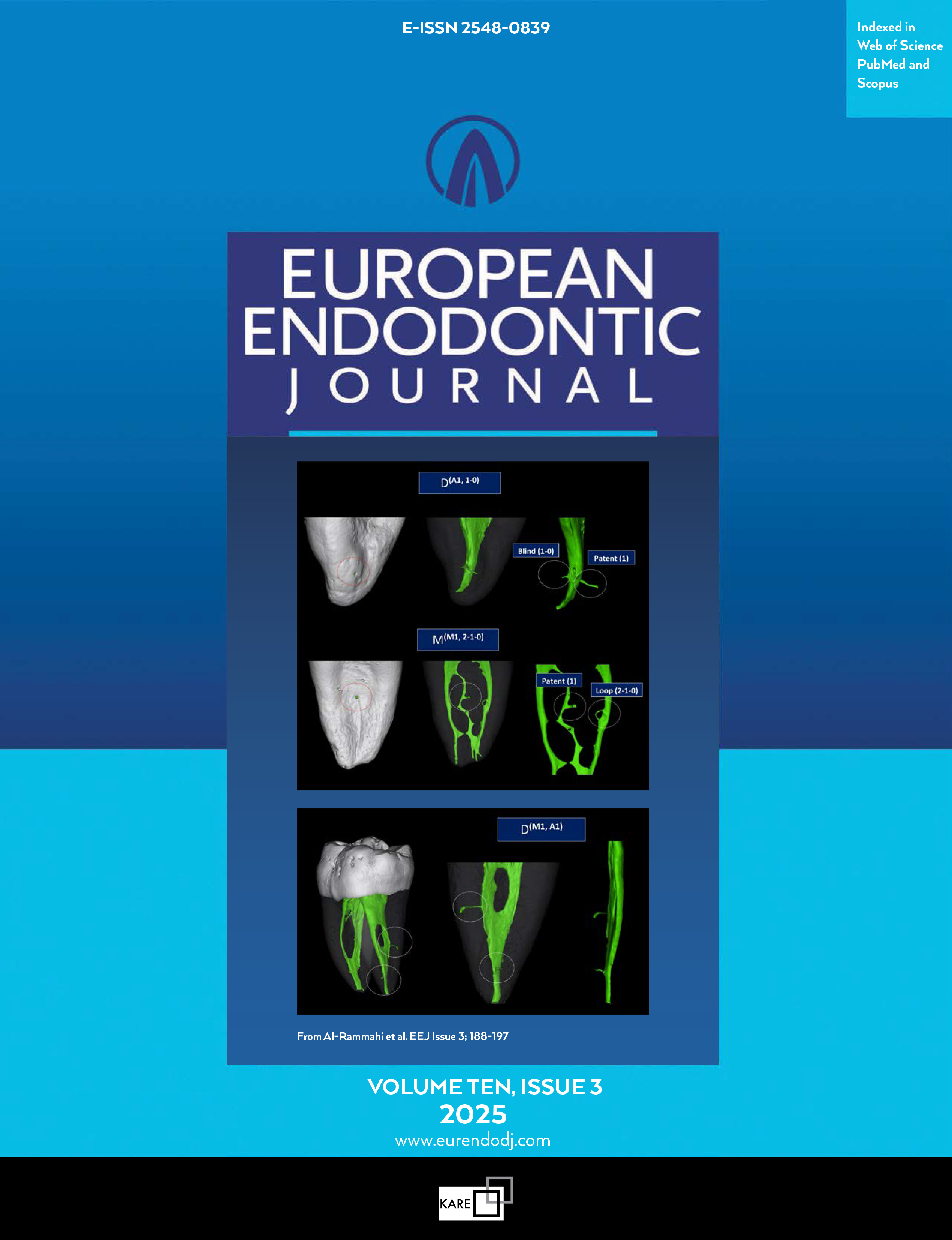Metrics
2024 IMPACT FACTOR
5 year Impact Factor
Eigenfactor Score
2024 CiteScore
Journal Citation Reports
(Clarivate 2025, JIF Rank)
The Outcome of Prescribing Antibiotics for the Management of Patients with Endodontic Infections
Masoud Parirokh1, Anahita Saffarzadeh2, Nouzar Nakhaei3, Paul Abbott41Endodontology Research Center, Kerman University of Medical Sciences, Kerman, Iran2Oral and Dental Diseases Research Center, Kerman University of Medical Sciences, Kerman, Iran
3Neuroscience Research Center, Kerman University of Medical Sciences, Kerman, Iran
4Department of Oral Restorative and Rehabilitative Sciences (P.A.), Faculty of Dentistry, University of Western Australia, Perth, Australia
Objective: This study aimed to evaluate the efficacy and duration of antibiotic therapy with different regi- mens of antibiotics for patients presenting with primary and secondary endodontic infections.
Methods: In a case series outcome study, all patients needing antibiotics due to endodontic infection were included. In patients with no history of hypersensitivity to penicillin, amoxicillin was used as the first-line antibiotic, followed by adding metronidazole if the symptoms did not show signs of recovery during the first 24 hours after prescribing the medication. If a patient did not respond to the combination of amoxicillin and metronidazole, amoxicillin was substituted with a parental penicillin G procaine. Patients who had sensitivity to penicillin received clindamycin. In cases where drainage was possible, the effect of the procedure on the success rate of antibiotic therapy was evaluated. All patients were asked to continue taking the antibiotic for up to two days following the relief of symptoms. Data were analysed by Chi-square, Fisher exact test, Indepen- dent t-test, and One-way ANOVA.
Results: Over a period of 6 years, 97 patients were eligible to be included in this study. In patients with no history of sensitivity to penicillin (95.9% of the patients), 52.7% of patients on amoxicillin and 43% of patients on amoxicillin plus metronidazole overcame the endodontic infections. In addition, drainage significantly increased the success rate of antibiotic therapy when amoxicillin was prescribed (p=0.046). There were no significant differences between the gender, age, type of tooth, need for primary or secondary endodontic treatment, previous history of infection, need for drainage or duration of antibiotic consumption (p>0.05), and the success of antibiotic prescription. However, patients who received a single antibiotic (either amoxi- cillin or clindamycin) had significantly shorter average times for the recovery of symptoms (p<0.05).
Conclusion: Amoxicillin helped patients recover from endodontic infection symptoms in more than half of the cases. However, it is necessary to monitor the patients to understand if they should be needed further treatment, such as another antibiotic or drainage. (EEJ-2022-11-138)
Manuscript Language: English
(725 downloaded)


